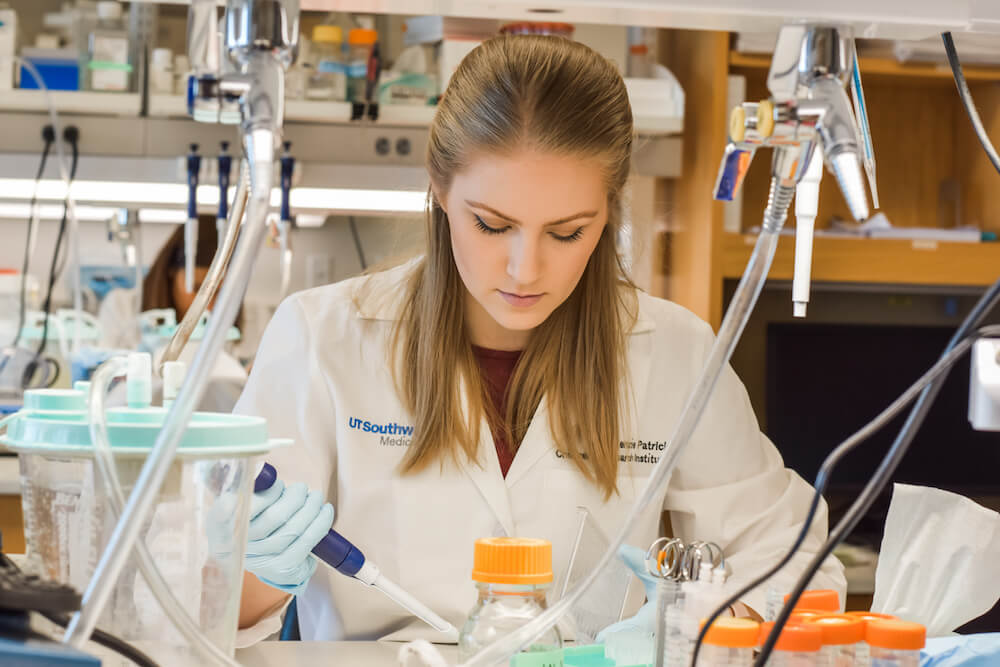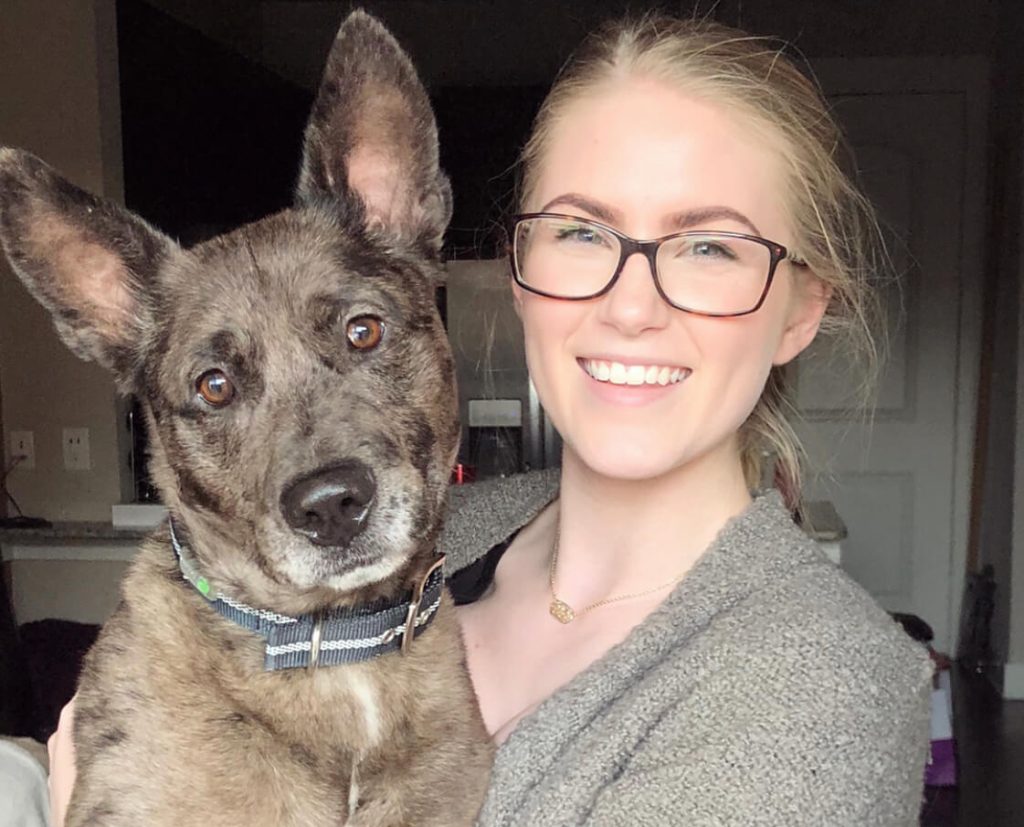January 21, 2020
McKenzie Patrick is a graduate student in the Children’s Medical Center Research Institute (CRI). She is a part of Dr. Jian Xu’s lab where she is working to better understand how malignant blood disorders such as leukemia develop and discover new treatment options.
What are you researching?
I’m studying how changes in cellular metabolism and cancer-causing mutations can work together to promote the development of leukemia. Specifically, I am interested in how an enzyme known as BCAT1 affects the metabolism of branched-chain amino acids (BCAAs). BCAAs are essential amino acids our bodies require to build cells, tissues, and organs, and their breakdown provides fuel and energy for important cellular processes. We know from previous research that changes in the BCAA pathway and elevated levels of BCAT1 are associated with several cancers, including non-small cell lung cancer, glioma, and leukemia, but we don’t exactly know why. Our lab also recently published a paper in Cancer Discovery that found inhibiting BCAT1 impaired the development and growth of leukemia cells.
I am excited to add to this research by discovering how blood cells use BCAAs for normal growth and to explore how altered BCAT1 activity can lead to leukemia development. I am hopeful that if we are able to determine the metabolic roles of BCAT1 and BCAA metabolism in leukemia this may lead to new targets for cancer treatment.


How did you end up in CRI?
At UT Southwestern, incoming graduate students are paired with an older student to guide them through the process, help them adjust to school, and choose rotation labs. I was lucky to get paired with a student in the DeBerardinis lab. She suggested that CRI and Dr. Jian Xu’s lab would be a good fit for me. I’ve really enjoyed my experience here so far. Jian’s enthusiasm for science is contagious –the whole institute has this great energy to it. Everyone in the lab is incredibly collaborative and supportive, and it’s amazing to work with and learn from other researchers in CRI too. I don’t think I could get better training than this.
What about being a researcher is different than people might expect?
Last summer, a teacher spent eight weeks in our lab as part of UT Southwestern’s STARS program, which allows teachers and high school students to work side by side with researchers. A teacher worked with me daily on my projects, and he told me he was really surprised by how busy a day can get, balancing multiple experiments at once, meetings, and coursework.


What would you be if you were not a scientist?
If I weren’t a scientist or working in the medical field, I probably would have a job related to either fitness or dogs. I grew up in a health/fitness-focused family. My mom served in the military, and my dad was a personal trainer. We also volunteered at local animal shelters when I was younger. Outside of lab, these are the two things I enjoy most.
What do you like to do when you’re not in the lab?
When I’m not in the lab, I like to spend time with my dog Semie. I rescued him from the Dallas Animal Shelter shortly after joining the lab. He brings me so much happiness! I also enjoy spending time at the gym after work. It is the perfect way for me to distress — just an hour or so completely focused on my health. On the weekends, I like to spend time with friends, many of whom are fellow graduate students in CRI.

© 2025 Children’s Research Institute Dallas Texas | Privacy | Site Policies